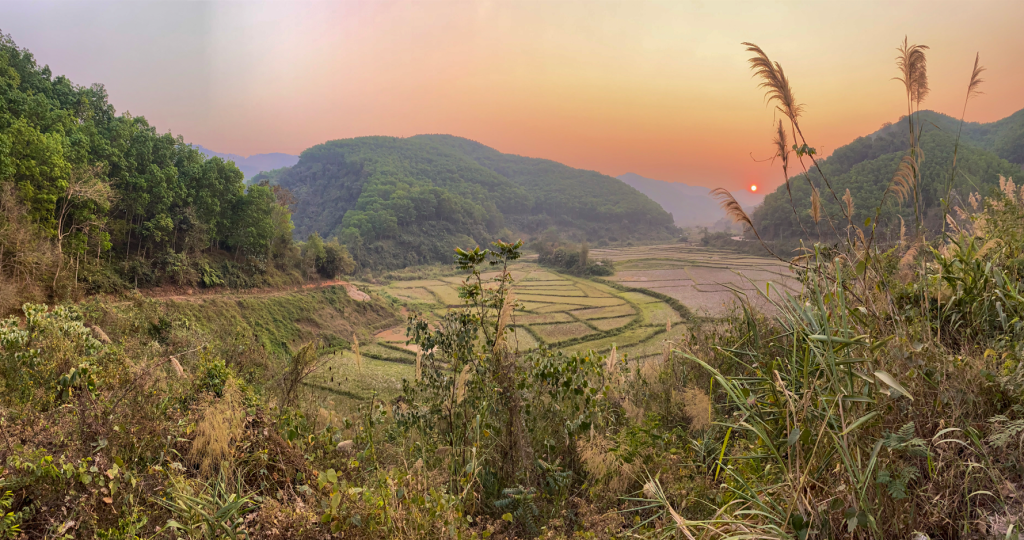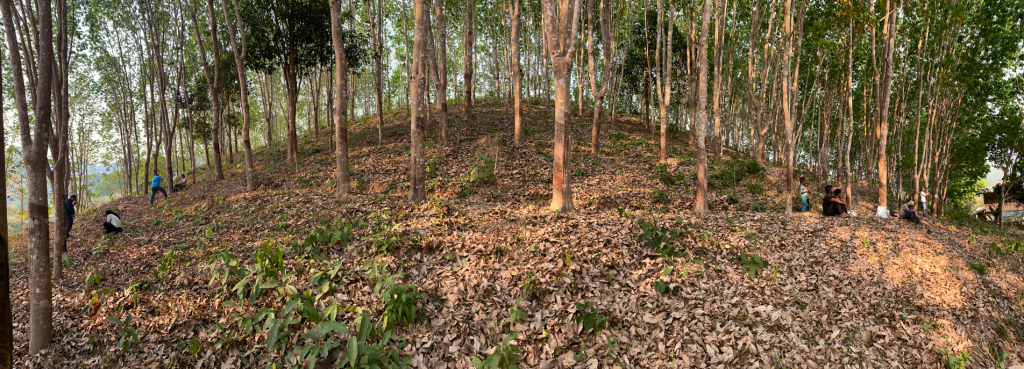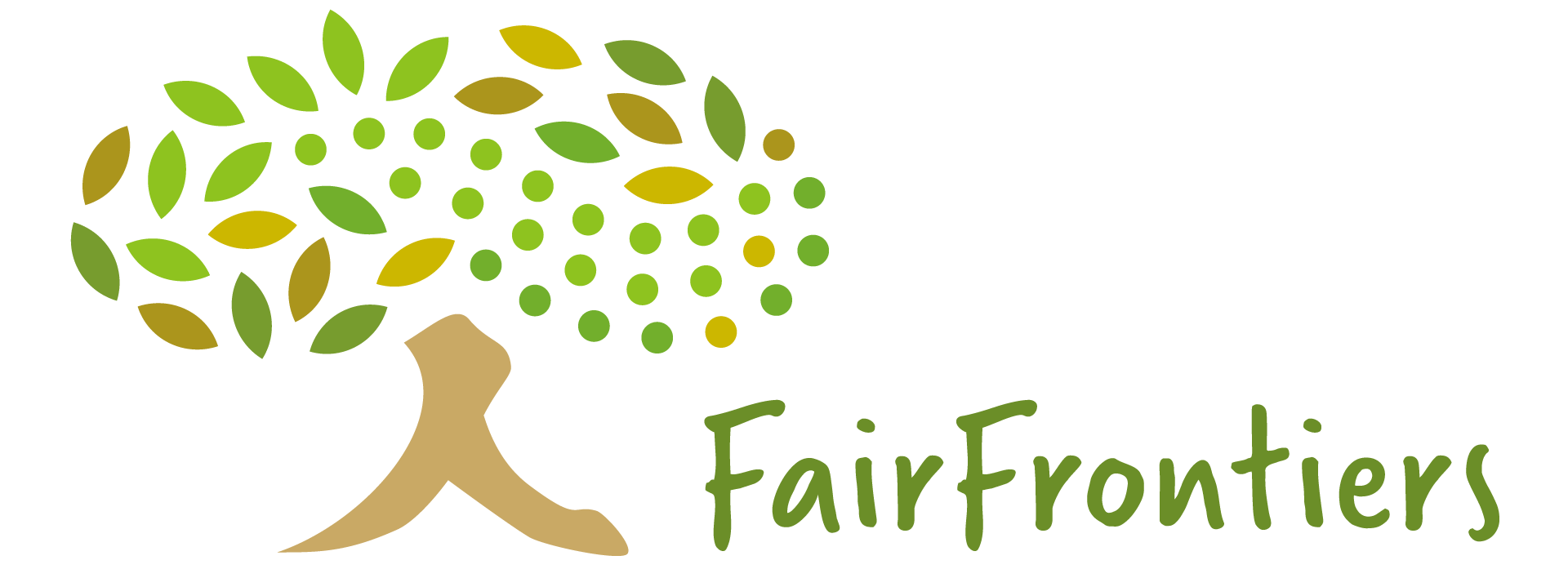
Vientiane: the city of SUV
It had been quite a long time since I last set foot on tropical soil, breathed warm air, felt the scorching sun, tasted juicy fruits, and enjoyed spicy foods. My longing for the tropics was recently fulfilled when I had the opportunity to conduct a field trip to Laos. Soon after my arrival at the carpet-floored Wattay International Airport, my first experience was currency exchange in Lao kip (about 1 USD = 21,000 kip), which involved dealing with many digits. This is a situation where anyone could become a millionaire overnight, only to have all the money disappear within a couple of days. This volatile financial situation could be attributed to the high inflation rates and depreciation of kip in Laos, influenced by factors such as debt owed to its rich neighboring countries.
After spending the night at a hotel in Vientiane, three researchers, including myself, prepared to continue our journey to northern Laos, which required us to take a train. The helpful receptionist arranged a taxi for us, and a Laotian female taxi driver with her double-cab (four-wheel-drive car) picked us up at the hotel and placed our luggage in the back. During the taxi ride to the newly established Chinese-sponsored railway station, we had a brief conversation about the popularity and prevalence of four-wheel-drive cars around Vientiane. We speculated that this might indicate rapidly developing infrastructure, including roads and highways, although many remote road conditions are still poor. Another possibility, as seen in some Southeast Asian countries, is that owning a SUV symbolizes material well-being or social status, indicating a social change from lower to middle class. This led me to consider the causal relationships among road conditions, the prevalence of four-wheel-drive vehicles, tire wear, the automobile industry, and global rubber demand.
Luang Namtha; Cross-border rubber transfer
Along the way to Luang Namtha, neighboring China’s second-largest rubber-producing region, Xishuangbanna, I couldn’t help but gaze out the train window at the landscape composed of forests, paddies, and plantations. What caught my eyes were the green and lush patches of trees, creating a unique and distinctive landscape. Since it was the dry season in March, everything except those trees—paddies and forests—appeared almost dry and dull. Only these trees stood out, saturated with lush green colors. Although I had never seen them before this trip to Laos, I could confidently assume they were rubber trees. My initial impression, as a forester, was their evergreen nature. However, upon further investigation, I learned that rubber trees, like other trees, also experience a phenomenon called “defoliation”. A study in Xishuangbanna highlighted that the duration of defoliation can affect latex yield. The geographical proximity to Xishuangbanna, in southern Yunnan province, is a major reason why Luang Namtha became the land of rubber in frontier Laos.

“Once you grow crops somewhere, you have officially colonized it,” said Mark Watney, the lead protagonist in “The Martian,” a sci-fi novel by Andy Weir. So, technically, the French were the primary colonizers of Laos because they first grew rubber in southern Laos. However, for northern Laos, China is considered the primary colonizer because all factors of rubber production originated from China in the 1990s, and all latex produced returns to markets in China. Unlike the French, the Chinese style is based on investments favored by Laos government policies, which aim to eradicate swidden agriculture, opium cultivation, and alleviate poverty. The land and labor of Laos, with their cheaper, more abundant, and more ecologically suitable conditions, are highly valued by the Chinese investors in an exploitative manner. Thus, despite its relatively shorter history compared to its neighbors, the speed and magnitude of the expansion of rubber plantations in frontier Laos are unprecedented.
The pros and cons
I appreciate the ‘beauty’ of rubber plantations. The neat rows of rubber trees, planted line by line in a systematic, even-aged, single layer, especially when they are mature and have a canopy of dark green leaves, can create a picturesque landscape. Additionally, rubber trees themselves are quite striking; very shady, fast-growing, and high-yielding. For those trees tapped for latex, I find a series of scars on the tree which I think are aesthetically interesting. These scars, known as “tapping marks,” are a testament to the tree’s productivity and the human interaction involved in its cultivation. Second, I appreciate the economic benefits of rubber, providing employment opportunities and an income source for farmers. This is why policies often see rubber as “development”. From economic perspectives, it is very hard to deny that the costs and benefits from rubber outweigh those of natural forests. But how long can they outweigh; the next 30 years or 40 years? I don’t know.

As I have learned, Laos has 70% forest cover according to FAO’s Forest definition. This is not unusual because the canopies of rubber plantations are technically classified as forest cover. While rubber contributes to the forest cover, I am skeptical of its functional aspects and cannot consider rubber plantations as forests. Naturally grown rubber trees in the wild are just like normal trees in the forest. But in plantations, they look like batch-by-batch trained soldiers, growing at the same time in shared land with the same treatment, culture, and fertilizers, and they serve the owner by yielding latex from their trunks. Based on my observations, rubber is valued for nothing but latex. So, the functionality and utility are highly questionable. Of course, tons of literature have already highlighted the impacts of rubber on biodiversity, soil fertility, and ecosystem services. On the other hand, legendary rubber experts are also trying to innovate rubber science for the future.
Non-material wellbeing
How was life here before rubber cultivation? I can imagine subsistence farmers and their upland life, isolated from what is now called “development.” They had their own social values: fewer conflicts, more reciprocity, traditions, more leisure, identities formed by coexisting with nature. How is life now? When I asked a villager about the reason for converting upland rice fields to rubber and any concerns about food security, the villager replied with no worries: “we already have lowland rice (paddy) for food security.” At first, I thought this was a quick response, but later, I realized it might indicate social inequity. Is food security a problem for those landless people who do not have paddy? Is it a problem for those landless people who don’t have equal access to the forests for upland rice cultivation? Rubber plantations are typically managed by both smallholder farmers and larger commercial enterprises. The unequal benefits may have created tensions in villages, as some households received employment while others have not. We should not ignore the nature of humans as social animals.
We should not ignore our tendency toward social conformity. I imagine life as a villager from northern Laos. When my neighbor is planting rubber and constructing a mansion house from a wooden one with the profits from rubber, how would I feel? When my neighbor is getting a new car from the profits from rubber and I am still using my old bicycle, how would I feel? Under these circumstances, I think I might lose social connections and feelings of happiness, contentment, and satisfaction with life. Thus, any form of inequities can have a big impact on the non-material well-being of individuals in the community. If I have land suitable for rubber, what would I do? Maybe I could not resist social conformity; maybe I would also have already planted rubber. And I will have to put in more labor and use land at the expense of my leisure. But it is not guaranteed that I can access clean air and water, natural spaces, and a healthy environment. Reflecting on a famous poem by Alexander Pope titled “Solitude,” which expresses the idea of finding contentment and happiness in a simple life in natural environment:
Solitude
Alexandar Pope
Happy the man, whose wish and care
A few paternal acres bound,
Content to breathe his native air
In his own ground.
I am skeptical that this poem reflects the current lives under the Laos government’s development policies. Who knows; rubber may create greed, inequity and undermine social values.
Post written by Wai Phyoe Maung
